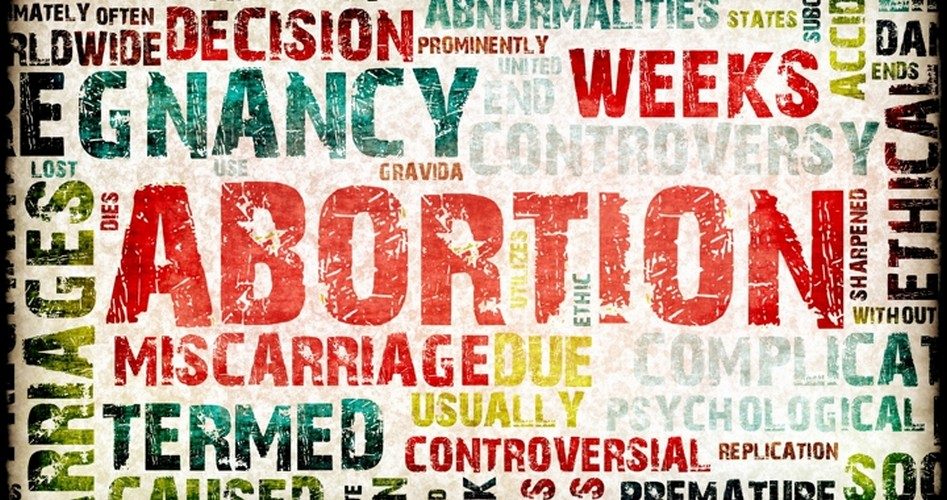
American retail pharmacists who oppose abortion — viewing it as the taking of a human life — are facing the increasing possibility of choosing between their career and their conscience.
This is because the percentage of drug-induced abortions is fast approaching that of surgically-induced abortions. Forty-three percent of pregnancy terminations at Planned Parenthood clinics (the nation’s top provider of abortions) are drug-induced as of 2014. This is up from 35 percent in 2010, according to Planned Parenthood.
The overall number of abortions has declined in the United States, and is now measured at 16.9 abortions per 1,000 women aged 15-44 in the most recent year with statistics available (2011). This compares to 19.4 abortions per 1,000 in 2008. This decline is a result of wider use of birth control and a rise in pro-life sentiment.
With new national prescribing guidelines taking effect next March, the number of abortions via the use of drugs is expected to increase. Danco Laboratories lobbied for the new guidelines. Danco holds a monopoly on the production of the pills for the U.S. market. A spokeswoman for Danco, Abby Long, said the company has experienced a surge in sales, making the drug-induced abortion “a second option and fairly equal” to the surgical procedures.
“We have been growing steadily year over year, and definitely the growth is larger this year,” Long said.
The two drugs used in conjunction to kill the unborn child are taken together over the course of a couple of days. Mifepristone blocks the pregnancy-sustaining hormone progesterone, while misoprostol induces uterine contractions.
The “abortion pill” was first approved in France in 1988, and has been widely used in Europe, with 91 percent of abortions in Finland accomplished this way, according to the pro-abortion Guttmacher Institute. Eighty percent of abortions in Scotland are also accomplished through the use of the two drugs.
Many women in the United States have expressed interest in ending their pregnancies by use of these two drugs, so they can avoid going to abortion clinics, where they might encounter protesters. And the U.S. Food and Drug Administration now allows for the pills to be used to end a pregnancy as much as 10 weeks in, as opposed to seven weeks under the old guidelines.
Tammi Kromenaker, director of the Red River Women’s Clinic in Fargo, North Dakota, explained that some women prefer ending their pregnancy at home, comparing it to a miscarriage.
Randall O’Bannon, a director of the pro-life National Right to Life organization, criticized the new liberalized guidelines, but admitted he had no plans to contest them. “It will increase the pool of potential customers,” O’Bannon lamented.
Many private physicians do not prescribe the pills. Some fear that public knowledge that they prescribe pills that induce abortion could leave them open to some of the same protests faced at surgical centers. Others simply have moral or religious objections to prescribing drugs that they believe take the life of a human being in the womb.
But for retail pharmacists in many states, they may simply have no choice. The U.S. Supreme Court recently voted, 5-3, to not hear a case from the state of Washington in which government regulations specifically target such religious objections.
The failure of the Supreme Court to hear the case (it takes four justices to consent to hear a case) leaves in place the ruling of the 9th Circuit Court of Appeals in San Francisco that regulations promulgated by a state board in Washington State may require pharmacies to fill an emergency contraceptive drug, regardless of the owners’ religious objections.
Justices Samuel Alito and Clarence Thomas were joined by Chief Justice John Roberts in voting to hear the case. The issue was whether a law that prohibits religiously motivated conduct violates the Free Exercise Clause when it exempts the same conduct when done for a host of secular reasons, when it has been enforced against only religious conduct, and when it has a history of showing an intent to target religion.
The drug in question is known as Plan B, an emergency contraceptive that is a high dose of the drug found in ordinary birth-control pills. It is reputed to lower the risk of pregnancy by almost 90 percent when taken within the first three days of unprotected sex. While pharmacies are required under the regulations to fill legal prescriptions, individual pharmacists with moral objections may choose to refer patients to another pharmacist; however, it has to be another pharmacist in the same store! This regulation is, of course, impractical and discriminatory, placing a greater burden upon an independently-owned drugstore than a larger chain store.
Justice Alito noted that the regulations are likely to make a pharmacist unemployable if he or she objects on religious grounds to dispensing certain prescription medications. Rather than hire an extra pharmacist to make sure the abortion-causing pills are dispensed, most businesses, large or small, will simply not hire such pharmacists, as a rational business decision.
What is particularly noteworthy about this case is that the state pharmacy board specifically targeted religious objections.
Steven Saxe, the executive director of the board, was blunt: “The public, legislators and governor are telling us loud and clear that they expect the rule to protect the public from unwanted intervention based on the moral beliefs … of a pharmacist.” Saxe allowed that there were legitimate reasons to refuse to dispense certain drugs, but religious objection was not among them.
So, we can expect that pharmacists will be compelled to dispense these two drugs as well, at least in some states, such as Washington. And, if the federal government takes over more and more of the healthcare system, we can expect that all healthcare workers will be forced to participate in abortion, either surgical or through drugs. Today, it is the pharmacists in Washington State, for example, who are faced with either complying or looking for a different job. But, once physicians and nurses become employees of the federal government, under a national healthcare system, we can expect they, too, will face similar demands.
Of course, there is an alternative scenario, one in which the government does not dictate any healthcare decisions. Unfortunately, that is not the sort of choice the “pro-choice” lobby is fighting for.



